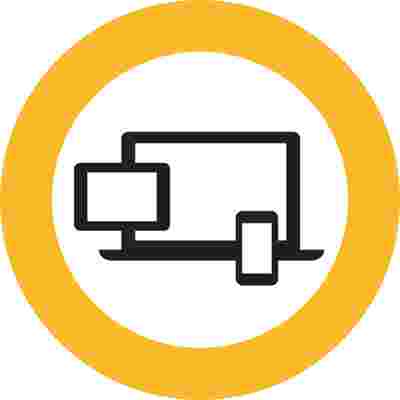Ransomware has been a growing global threat for couple of years now. Recent events have seen this modern and particularly malicious form of malware thrust into the public consciousness but in 2016, according to the FBI, a whopping $1 billion was paid in Ransomware payments. This represents an increase of over 4000% on ransomware payments paid in 2015. With everything that we’re seeing in the news these days about high profile ransomware attacks another huge increase on payments is likely for 2017.
What exactly is Ransomware and how can it affect me?
Ransomware is a part of the larger Rogueware classification of malware. Rogueware includes scams like fake antivirus and scareware but Ransomware is arguably the most serious. If you fall victim to a Ransomware attack you could lose huge amounts if not all of your data (including photographs, videos and any work related files you might have on your computer), your identity could be stolen and you could also, fall victim to extortion. The average ransomware demand is $679.
The way Ransomware works is that cyber-criminals lay traps for you all over the internet in the form of infected popup ads, fake links and dubious websites. If you happen to click on any of these traps they can quickly gain control of your computer and hold your data to ransom. Once they’re in control of your data they can use a variety of methods to try and make you pay them to get your data back.

One common trick is for them to bombard your screen with ads for pornographic websites. This can leave you embarrassed should it happen whilst other people are around. Another morbid tactic utilized by these criminals is akin to sending you a virtual toe from their ‘kidnapped victim’ and saying they’ll send more body parts if you don’t pay up. The hackers tell you a specific file of yours that they have and then tell you that if you don’t pay up within a certain amount of time they’ll delete it. They could also demand that you purchase a particular program to de-encrypt your data or offer you the chance to pay a low ransom via a premium rate text message service or Western Union cash transfer. Payment, however, almost never results in data recovery so you should always resist the urge to give in to the demands.
How can I protect myself from Ransomware attacks?
You need to be extra vigilant and take extra care when you’re clicking on links, opening attachments and visiting web pages. In fact, a good tactic is to trust nobody and never open attachments from an email address you’re not familiar with. As well as increased vigilance, there are a number of important steps you can take to protect yourself against a Ransomware attack.

The most important thing you can do, by far, is to have a reputable antivirus program and firewall like Norton Security Deluxe installed on your computer. If you update your antivirus program regularly, it’ll be very difficult for cyber-criminals to gain control of your computer. On a side note it is also very important to keep all of your software up to date as criminals can exploit security flaws in older versions of programs.
Another important step to take is to backup all of your data using a cloud-based service, a physical hard drive or preferably both. If you have your data backed up you’re insulated from extortion attempts in order to get it back. You’re still vulnerable to identity theft, however, so it is still important to have a strong antivirus program installed on your machine.
The final step is to ensure you’re popup blocker is enabled. Popups are ransomware hackers’ main weapon and it is very easy to click on a popup even if you’re trying to close it down. What makes these types of popups even worse is that the hackers can put fake ‘X’ buttons that you’ll click on thinking that you’re getting rid of the popup. These ads are virtual minefields and so should just be avoided at all costs.
What do I do if I fall victim to a Ransomware attack?
If you receive a Ransomware note the best thing you can do is immediately disconnect your computer from the internet and then shut it down. If you’ve backed up your data you can then think about reinstalling it but if you don’t feel comfortable doing that you should your machine to a reputable repair shop. The other important thing you need to do, should you receive a Ransomware note is alert the authorities. Ransomware is a very serious form of extortion and as such, all incidents should be reported.
Important Takeaways
To conclude the most important step you should take to protect yourself from Ransomware attacks is to install a rigorous and robust antivirus program. On top of this enable your popup blocker, remain vigilant, regularly update all your applications and backup your data every 6 months or so.
Should you fall victim to a Ransomware attack do not think that you’ll be able to pay your way out of the problem. Paying will only lead to further extortion and it is highly likely that it will not result in your data being recovered. Report the incident to the authorities and disconnect your machine from the internet before trying to fix the problem.